
Phyang Monastery
A 16th-century Drikung Kagyu Buddhist monastery near Leh, renowned for its vibrant frescoes, museum, and panoramic valley views.
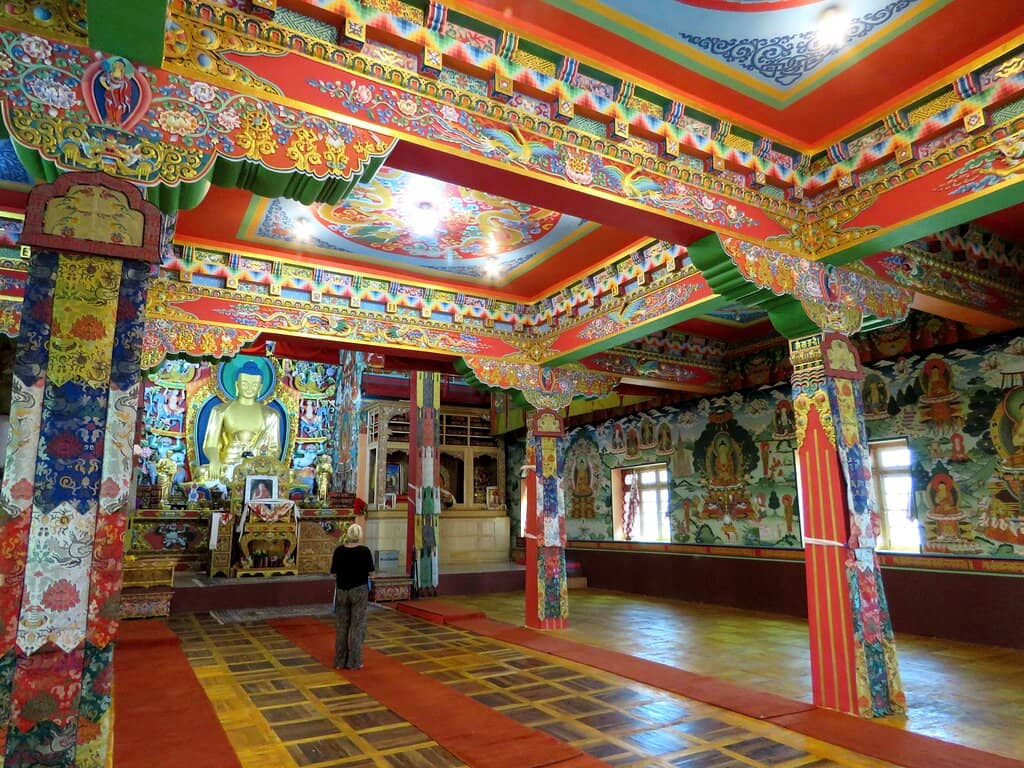
Highlights
Must-see attractions
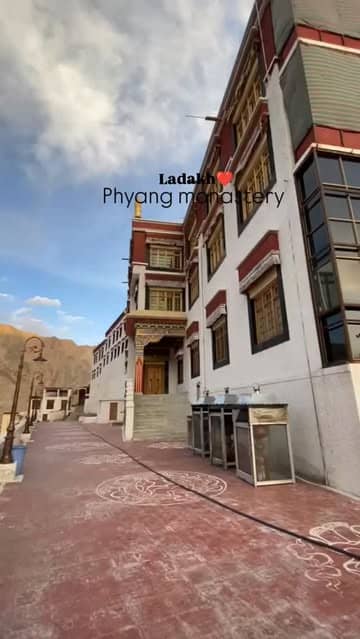
Social
From TikTok & Reddit
Best Time
Fewer crowds, peaceful atmosphere

Phyang Monastery
Best Time
Fewer crowds, peaceful atmosphere

Highlights
Must-see attractions
A 16th-century Drikung Kagyu Buddhist monastery near Leh, renowned for its vibrant frescoes, museum, and panoramic valley views.
"One of the most beautiful monasteries I've seen, with mesmerizing wall art and a profound sense of peace."
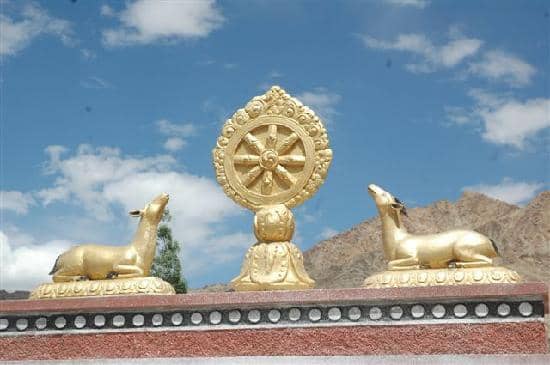
Dress Modestly
Cover shoulders and knees out of respect for the monks and sacred space. :pray:
Ask Before Photographing
Always seek permission before taking photos of monks or religious ceremonies. :camerawithflash:
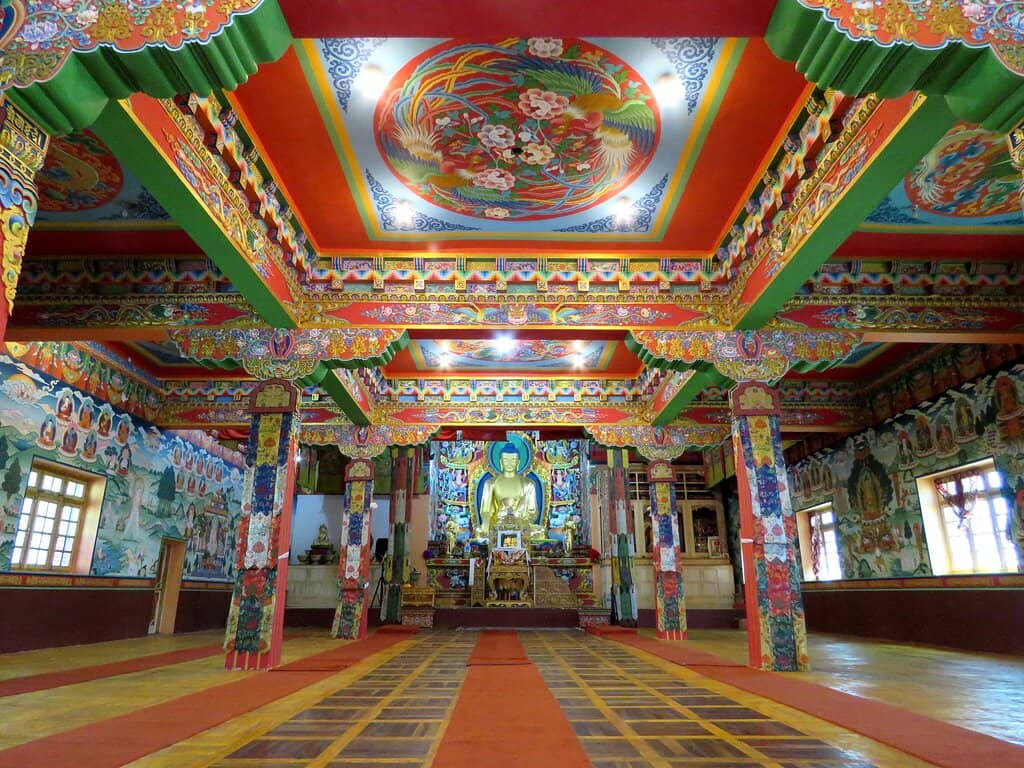
Highlights
Discover the most iconic attractions and experiences
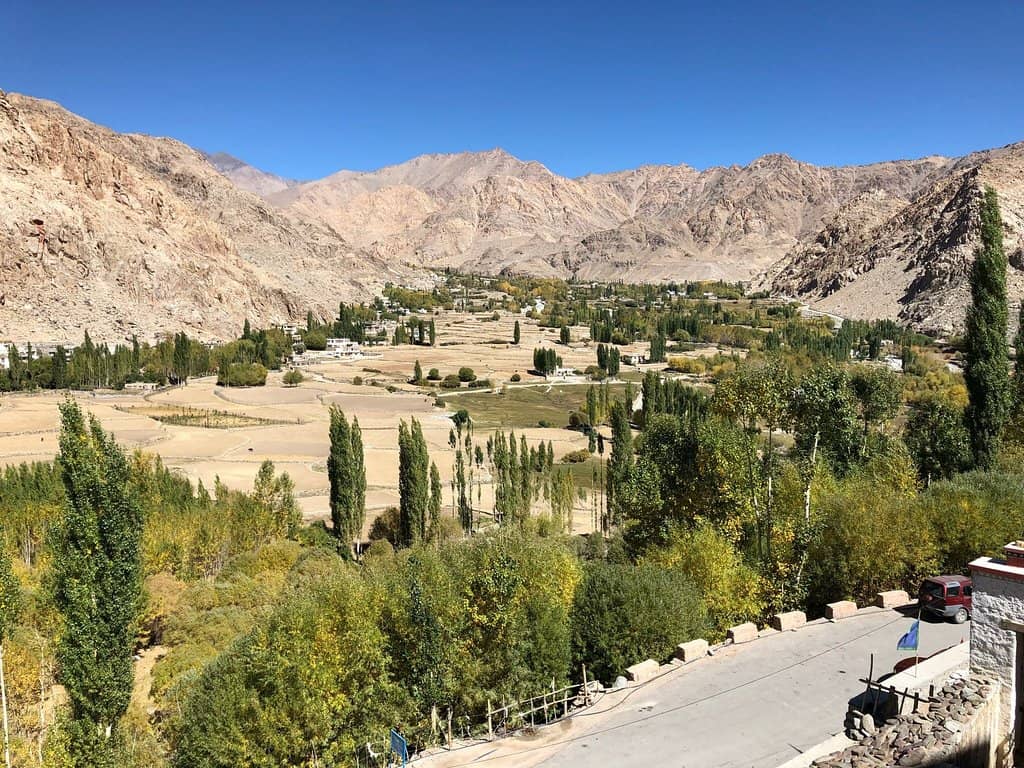
Vibrant Frescoes
Main Prayer Hall
Intricate, brightly colored murals depicting Buddhist deities and teachings. A visual feast for art and history lovers.
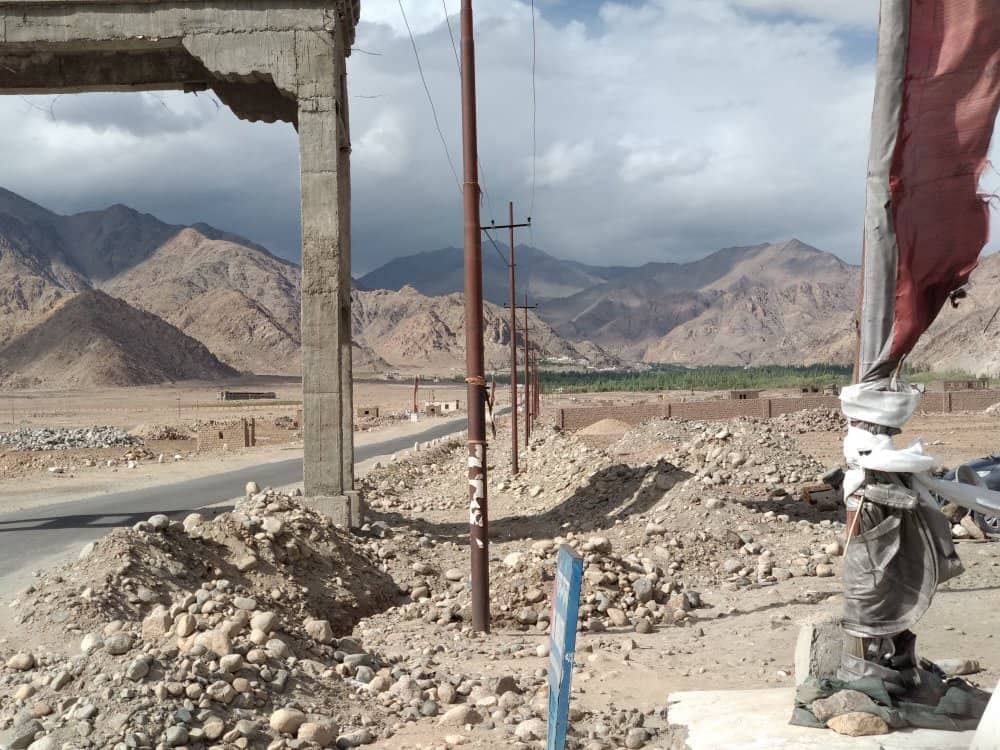
Monastic Museum
Within the Monastery Complex
Discover ancient thangkas, religious artifacts, and historical treasures that tell the story of Tibetan Buddhism.

Panoramic Views
Hilltop Location
Breathtaking vistas of the Indus Valley and surrounding landscapes offer a serene backdrop to your visit.
Plans like a pro.
Thinks like you
Planning Your Visit
Timing Your Visit for Serenity
Respectful Exploration
Best Times
Insider Tips
from TikTok, Instagram & Reddit
Dress Modestly
Cover shoulders and knees out of respect for the monks and sacred space. :pray:
Ask Before Photographing
Always seek permission before taking photos of monks or religious ceremonies. :camerawithflash:
Embrace the Calm
Soak in the serene atmosphere; it's a place for quiet contemplation. :thought_balloon:
Wear Comfortable Shoes
You'll be doing some walking, especially if you explore the higher vantage points. :athletic_shoe:
Tips
from all over the internet
Dress Modestly
Cover shoulders and knees out of respect for the monks and sacred space. :pray:
Ask Before Photographing
Always seek permission before taking photos of monks or religious ceremonies. :camerawithflash:
Embrace the Calm
Soak in the serene atmosphere; it's a place for quiet contemplation. :thought_balloon:
Wear Comfortable Shoes
You'll be doing some walking, especially if you explore the higher vantage points. :athletic_shoe:
Visit the Museum
Don't miss the collection of ancient thangkas and artifacts. :museum:
What Travellers Say
Reviews Summary
Visitors consistently praise Phyang Monastery for its serene atmosphere, stunning architecture, and the mesmerizing beauty of its ancient frescoes. Many highlight the peaceful ambiance and the breathtaking views of the Indus Valley. While not as famous as some other Ladakhi monasteries, its authenticity and cultural richness make it a highly recommended stop for those seeking a deeper connection with the region's spiritual heritage.
"Phyang Monastery, located about 15 km from Leh, is a hidden treasure of Ladakh that beautifully blends history, spirituality, and breathtaking scenery. Perched on a hill overlooking the vast Indus Valley, this monastery belongs to the Drikung Kagyu sect of Tibetan Buddhism and holds immense historical and cultural significance. While it may not be as famous as some of the larger monasteries in Ladakh, its peaceful atmosphere and stunning surroundings make it a must-visit for travelers looking for an authentic experience.
History and Significance
Founded in the 16th century by King Tashi Namgyal, Phyang Monastery has been a center of Buddhist learning and meditation for centuries. The monastery is home to numerous monks who dedicate their lives to prayer, study, and maintaining the sacred traditions of their sect. It houses a remarkable collection of ancient murals, thangkas (Tibetan Buddhist paintings), and religious artifacts that showcase the rich artistic and spiritual heritage of the region.
One of the most fascinating aspects of Phyang Monastery is its strong connection to Tibetan Buddhism’s Drikung Kagyu lineage. This sect is known for its deep-rooted meditation practices and teachings, and visitors can often witness monks engaged in prayers and rituals that have been passed down through generations. The monastery also houses a school where young monks receive both spiritual and modern education, preserving Ladakh’s monastic traditions while adapting to the contemporary world.
Architecture and Art
The monastery’s architecture is a classic example of traditional Tibetan Buddhist design, with whitewashed walls, golden rooftops, and intricately decorated interiors. The main prayer hall is adorned with vibrant murals depicting Buddhist deities, historical events, and teachings from sacred scriptures. These paintings are not only visually captivating but also serve as an important means of preserving Buddhist philosophy and culture."
Parth Bhardwaj
"Phyang Monastery, also known as Phyang Gompa, is a Buddhist monastery located in Ladakh, India. It belongs to the Drikung Kagyu school of Tibetan Buddhism and is one of the most significant monasteries in the region"
stanzin norbu ck
"As I stepped through its gates, I was immediately immersed in a serene and sacred atmosphere. The monastery’s architecture, adorned with intricate details and vibrant colors, was a visual delight."
Kaushik Mandal
What People Like
What People Dislike
Frequently Asked Questions
🚇 🗺️ Getting There
Phyang Monastery is located about 15-17 km west of Leh city. You can hire a taxi or a private car from Leh. The journey typically takes around 30-45 minutes, depending on traffic. Some travelers also opt for local buses for a more budget-friendly option, though schedules might be less frequent. :car: :bus:
While it's a scenic route, walking from Leh to Phyang Monastery is a considerable distance (around 15 km) and can be challenging due to the altitude and terrain. It's generally recommended to use transportation for this journey. :hiking_boot:
Once you reach the monastery, exploring the complex involves walking. If you wish to explore areas higher up, like the 'ice cafe' mentioned by some visitors, comfortable footwear is essential. :athletic_shoe:
The main road from Leh towards Phyang is generally well-maintained. Some visitors have mentioned exploring roads that go higher up past the main monastery, leading to unique viewpoints. :road:
Ride-sharing apps are not as prevalent in Ladakh as in major cities. Hiring a local taxi or arranging transport through your hotel or a local tour operator is the most reliable method. :iphone:
🎫 🎫 Tickets & Entry
While many monasteries in Ladakh do not charge a formal entrance fee, a small donation is often appreciated to help with maintenance and the upkeep of the monks' living quarters. It's always good to have some cash on hand for this purpose. :moneywithwings:
Monasteries in Ladakh typically open early in the morning and close in the late afternoon or early evening. It's advisable to visit between 9 AM and 5 PM to ensure most areas are accessible and monks are present. :clock1:
No, advance booking is not required for Phyang Monastery. You can visit anytime during its operational hours. :ticket:
The primary restriction is to dress modestly and behave respectfully. Photography of monks and religious ceremonies may require permission. Avoid loud noises and be mindful of the sacred environment. :noentrysign:
Yes, visiting during festivals like the Phyang Festival (usually held in summer) can be a unique experience to witness cham dances and cultural events. However, expect larger crowds during these times. :confetti_ball:
📸 📸 Photography
The monastery itself offers stunning architectural shots, especially the prayer halls with their vibrant frescoes. The hilltop location provides panoramic views of the Indus Valley, perfect for landscape photography. Don't forget to capture the details of the prayer wheels and stupas. :camerawithflash:
Photography inside the main prayer halls, especially of the intricate frescoes and religious artifacts, is often restricted or requires special permission. Always look for signage or ask a monk before taking pictures. :no_photography:
Early morning or late afternoon offers the best natural light for photography, creating beautiful shadows and highlighting the monastery's colors. Golden hour can be particularly magical. :sunrise: :city_sunset:
It's crucial to ask for permission before photographing any monks. Many are happy to oblige if asked politely, but some may prefer not to be photographed. Respect their privacy. :manintuxedo:
The monastery's hilltop setting offers unique perspectives. Some visitors have captured shots of the 'ice cafe' above the monastery, providing an unusual juxtaposition of modern amenities with ancient surroundings. :ice_cube:
🍽️ 🍽️ Food & Dining
There are no formal restaurants or cafes within the monastery complex itself. However, some visitors have mentioned an 'ice cafe' located higher up the hill, offering refreshments with a view. :coffee:
For a wider range of dining options, you'll need to return to Leh city. Leh offers a variety of restaurants serving Ladakhi, Indian, Tibetan, and international cuisine. :ramen:
Yes, it's highly recommended to carry your own snacks and plenty of water, especially if you plan to spend a few hours exploring or hiking around the monastery. :water_wave: :cookie:
Phyang village itself might have very basic local eateries or tea stalls, but they are not widely advertised. It's best to rely on Leh for substantial meals. :bread:
When in Leh, try Thukpa (noodle soup), Momos (dumplings), Skyu (a hearty stew), and Butter Tea (Gur Gur Chai). :dumpling:
For Different Travelers
Tailored advice for your travel style
👨👩👧 Families with Kids
Practical tips for families: Carry plenty of snacks and water, as dining options are limited. Ensure children wear comfortable shoes for walking around the complex. While the altitude can be a factor, Phyang is relatively close to Leh, making it a manageable excursion. Consider a shorter visit if children are easily tired. :child:
🚶 Solo Travelers & Backpackers
Tips for solo visitors: Consider hiring a shared taxi from Leh to reduce costs. Engage with the local culture respectfully, and don't hesitate to ask monks for permission to photograph. The 'ice cafe' mentioned by some travelers could be a unique spot for a brief respite and a different perspective. :backpack:
📸 Photographers & Art Enthusiasts
Photography tips: Visit during the golden hours (early morning or late afternoon) for the best light. Be mindful of photography restrictions inside prayer halls and always ask permission before photographing monks. The surrounding landscape offers stunning panoramic shots, especially from the hilltop vantage points.
Deep Dives
In-depth insights and expert knowledge
History and Spiritual Significance
The Drikung Kagyu lineage is known for its profound meditation practices and teachings. Visitors may have the opportunity to witness monks engaged in ancient rituals and prayers. The monastery also operates a school, ensuring that young monks receive both spiritual and modern education, thus safeguarding Ladakh's monastic heritage for future generations. This blend of tradition and contemporary education is a key aspect of its enduring relevance.
Beyond its spiritual role, Phyang Monastery is a repository of rich artistic and cultural heritage. It boasts a remarkable collection of ancient murals, thangkas (Tibetan Buddhist paintings), and religious artifacts that offer insights into the region's artistic evolution and philosophical depth. These elements collectively contribute to the monastery's status as a vital cultural landmark in Ladakh.
Architectural Marvels and Artistic Treasures
These murals are not merely decorative; they serve as a crucial medium for preserving and disseminating Buddhist philosophy and culture. The artistic style often blends Tibetan and Indian influences, reflecting the historical interactions and cultural exchanges in the region. The intricate details and rich symbolism within these paintings offer a deep dive into the spiritual narratives and aesthetic sensibilities of the Drikung Kagyu school.
Visitors are often mesmerized by the visual splendor and the sense of peace that permeates the monastery. The careful craftsmanship and the spiritual resonance of the art create an immersive experience. Exploring the various chambers and observing the detailed artwork provides a profound appreciation for the monastery's artistic heritage and its role as a custodian of Buddhist art.
Experiencing Phyang: Beyond the Monastery Walls
The village of Phyang itself provides a glimpse into local Ladakhi life. Interacting with the community, even briefly, can offer a more grounded perspective on the region. The monastery's location, perched on a hill, also means that the journey to and from it can be as rewarding as the destination itself, with opportunities for scenic drives and appreciating the vastness of the Indus Valley.
For those interested in cultural immersion, visiting during local festivals, such as the Phyang Festival, can be an unforgettable experience. These events often feature vibrant cham dances (masked religious dances) and other traditional performances, offering a lively contrast to the monastery's usual serenity.

Social
from TikTok, Instagram & Reddit